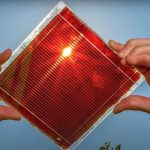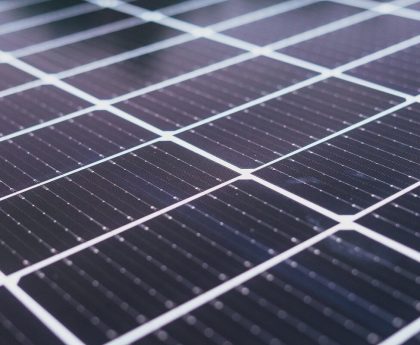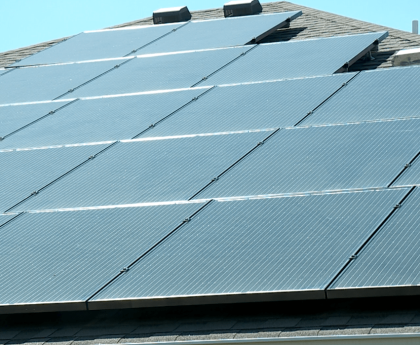PORTSMOUTH — An effort by leaders of the historic St. John’s Episcopal Church to install 102 solar panels on the Chapel Street property reignited a heated debate about what’s more important: historic preservation or fighting climate change.
Church officials sought to place the black solar panels on the black roof of the church’s Parish House — which was built in 1953 — and not the historic church itself, which was rebuilt in 1808.
A fire destroyed the original wooden church, which was erected in 1732, according to church and city records.
The proposed 102 solar panels would produce enough energy to pay for the church’s electric costs, a solar installer working for the church told the Historic District Commission during a recent meeting. A plan to allow fewer panels was later approved after much debate.

But the Rev. Robert Stevens Jr., the rector at St. John’s Church, told the HDC “it’s not just about money, it’s not even primarily about money.”
Stevens acknowledged that “money matters,” and said the church has to raise money every year to pay for expenses, stating he calls it “The Fall Begathon.”
However, he said, the solar panels are primarily about the church helping the environment.
Stevens acknowledged “it would be really helpful to not have an electric bill. But it’s also a moral imperative of how we care for the planet,” he said.
Stevens noted Portsmouth has a “South End that’s been under water a lot lately.”
“I’m not a scientist, but I believe in science, as well as I believe in God,” he added.
Saying “we are at a turning point,” Stevens told the commission he hoped “you will kind of get creative and think about how this might be the right thing today, not just for today but for the past and also for the future.”
Opposition to solar panels

A number of Portsmouth Historic District Commission members and some residents opposed the project and worried about its impact on preserving the city’s historic district.
Commissioner Martin Ryan said the solar panels “are out of character with historic architecture, they’re out of character with the building.”
“This is just a step too far, it’s a huge application of panels in a very public area,” Ryan said.
Commissioner Larry Booz said he also opposed the project and pointed to the prominence of the historic church building.
“If you grant this, you might as just throw in the towel,” he said.

Vice Chair Margo Doering stated, “the angle of this roof when you stand on Chapel Street is very, very low and you cannot see solar panels on that roof for a large part of Chapel Street.”
But she acknowledged that “viewing it from Bow Street, it is much more visible.”
Commission Chair Reagan Ruedig agreed the views of the solar arrays from Chapel Street would be “minimal.”
“You can really see it most only when you’re standing directly in front of the church, and that’s a hard place to stand because there’s another building right in front,” she said.
But Ruedig conceded “the Bow Street side is very visible, you can’t at all argue that it’s minimally visible in any way.”
Solar arrays must be minimally visible in the historic district under existing guidelines.
“We are trying to find that balance of what is appropriate in the historic district,” she stated.
Choosing historic preservation
Sue Polidura was one of several residents who spoke against the project.
“I don’t want to oppose anybody who wants to do solar, but this is massive,” she said. “It is seen from everywhere. This is totally out of place for that building.”
She noted Daniel Webster spoke in the church, and former President George Washington visited it.
“It is one of the most significant historical places in town,” she said.
Attorney Duncan MacCallum told the commission “either you are committed to historic preservation, or you’re not.
“If you are committed to historic preservation, like everything else, historic preservation has its price,” he said. “One of those costs is that solar panels have to go, or at least their use must be carefully scrutinized and sparingly allowed.”
“If it comes down to a choice between historic preservation and promoting green energy, I choose historic preservation. Green energy is just going to have to take a temporary backseat,” MacCallum added.
Former City Councilor Petra Huda said the St. John’s Church building is on the National Historic Register.
“This building is at the core of the historic district. To let this go, as visible as this will be from as many directions as it is, is totally against what is your code at the current time,” she said. “The historic district is something that is very precious to the city of Portsmouth.”
Solar panels and environment should be priority, Blalock says
City Councilor Rich Blalock, who also serves on the HDC, has been working with City Councilor Josh Denton to attempt to make it easier for people to install solar arrays in the historic district.
He recalled how in 1973 “my family bought the cheapest property in Portsmouth,” which became the Old Ferry Landing restaurant.
At the time, the waterfront was “not a desirable end of town,” Blalock said.
“People were getting murdered there in the ’80s” and in the 1970s you’d see “wharf rats bigger than your foot,” Blalock said.
More:Portsmouth moves toward easing solar panel rules:
Blalock cautioned his fellow commissioners, “if we don’t start making changes tonight with these solar panels, all that is going to be underwater.”
“You guys are going to have to swim up to the Old Ferry Landing bar, it’s not going to be there,” because of rising water levels, he said.
Approval vote on church solar panels fails
Blalock made a motion to approve the 102 solar panels proposed by St. John’s.
Blalock credited church leaders for doing their job to make the solar panels “as minimally visible as they can.”
“It’s just a view of a solar panel, it’s not knocking down a building, it’s not changing the building,” he said. “I really don’t understand why people are so anti-solar.”
Blalock’s motion to approve the solar panels as approved failed by a 4-3 vote, with Blalock, Ruedig and Commissioner Jon Wyckoff voting for it and Commissioners Doering, Ryan, Daniel Brown and Dave Adams voting against it.
Before the vote, Adams stated you could make an argument the solar panels proposed for the Chapel Street side would be minimally visible.
“The side toward Bow Street is much more problematic, it provides much more opportunity for reflection, which I think is bad,” Adams said.
“We, contrary to popular opinion, are living in the present and trying to preserve the past at the same time,” he added. “I think the Bow Street side is too far for me at this moment.”
After the vote to approve all 102 panels failed, Adams made a motion to approve the solar panels “to be installed on the Chapel Street side only.”
That change resulted in 54 panels being approved after church leaders indicated they were interested in the scaled-back approval.
All commissioners voted to approve the motion, except for Ryan, who abstained.
This post was originally published on 3rd party site mentioned in the title of this site






